
Ahmedabad: The Heritage City of India
Ahmedabad, India's UNESCO World Heritage City, offers a blend of historic charm, cultural richness, and mouth-watering cuisine, making it a must-visit destination.
Ahmedabad, the largest city in the state of Gujarat, India, is a vibrant blend of tradition and modernity. Known for its rich history, the city is a UNESCO World Heritage City. This status is a nod to its well-preserved architectural heritage, including centuries-old mosques, temples, and stepwells. A visit to Ahmedabad is incomplete without exploring the Sabarmati Ashram, the home of Mahatma Gandhi during the Indian independence movement. The tranquil ashram is a place for reflection and learning about India's history. The city also boasts beautiful gardens like the Law Garden and the Kankaria Lake, where families can enjoy boat rides, a zoo, and an amusement park. Food lovers will find Ahmedabad a paradise. The city is famous for its street food, including dishes like khaman, dhokla, and fafda. The evening food markets are a must-visit for anyone looking to savor authentic Gujarati cuisine. Additionally, Ahmedabad is known for its vibrant textile industry, with the Calico Museum of Textiles being a major attraction for those interested in the rich fabric history of India.
Local tips in Ahmedabad
- Visit the Sabarmati Ashram early in the morning to avoid crowds.
- Try local street food in the evening at Manek Chowk for the best experience.
- Wear comfortable shoes as you will do a lot of walking while exploring the heritage sites.
- Stay hydrated and carry a hat or umbrella as the city can get quite hot during the day.
- Make time to visit the Calico Museum of Textiles, but remember to book your visit in advance.
Ahmedabad: The Heritage City of India
Ahmedabad, the largest city in the state of Gujarat, India, is a vibrant blend of tradition and modernity. Known for its rich history, the city is a UNESCO World Heritage City. This status is a nod to its well-preserved architectural heritage, including centuries-old mosques, temples, and stepwells. A visit to Ahmedabad is incomplete without exploring the Sabarmati Ashram, the home of Mahatma Gandhi during the Indian independence movement. The tranquil ashram is a place for reflection and learning about India's history. The city also boasts beautiful gardens like the Law Garden and the Kankaria Lake, where families can enjoy boat rides, a zoo, and an amusement park. Food lovers will find Ahmedabad a paradise. The city is famous for its street food, including dishes like khaman, dhokla, and fafda. The evening food markets are a must-visit for anyone looking to savor authentic Gujarati cuisine. Additionally, Ahmedabad is known for its vibrant textile industry, with the Calico Museum of Textiles being a major attraction for those interested in the rich fabric history of India.
When is the best time to go to Ahmedabad?
Iconic landmarks you can’t miss
Law Garden
Explore Law Garden in Ahmedabad, a vibrant park filled with lush landscapes, local handicrafts, and delicious street food, perfect for a cultural getaway.
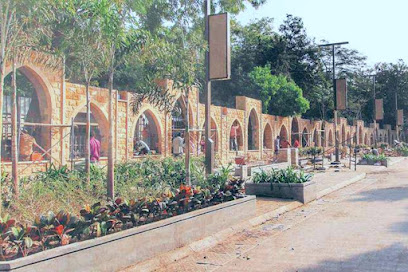
Riverfront Flower Park
Experience the beauty of nature at Riverfront Flower Park, Ahmedabad's serene escape filled with vibrant flowers and scenic river views.

Sabarmati Ashram
Explore the serene Sabarmati Ashram, a historical site dedicated to Mahatma Gandhi, showcasing his life, philosophy, and the Indian independence movement.

Teen Darwaza
Discover the architectural beauty and rich cultural heritage of Teen Darwaza, a historic landmark in Ahmedabad, India.

Adalaj Stepwell
Explore the stunning Adalaj Stepwell, a historical landmark in Gujarat, India, showcasing exquisite architecture and rich cultural heritage.

Parimal Garden
Discover the tranquil beauty of Parimal Garden in Ahmedabad, a perfect destination for relaxation and nature appreciation amidst the city's hustle.

Kamla Nehru Zoo
Experience the enchanting wildlife and lush landscapes at Kamla Nehru Zoo in Ahmedabad, a perfect destination for families and nature enthusiasts.

Science City Ahmedabad
Experience the fascinating world of science at Science City Ahmedabad, where education meets entertainment in an engaging and interactive environment.

Sabarmati Riverfront
Discover the picturesque Sabarmati Riverfront in Ahmedabad, a perfect blend of nature, culture, and recreation for every traveler.

Sidi Saiyyed Mosque
Explore the intricate beauty of Sidi Saiyyed Mosque, a stunning example of Indo-Islamic architecture in the heart of Ahmedabad's Old City.
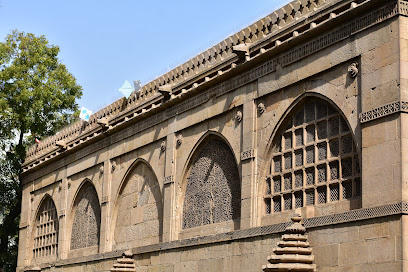
Bai Harir Vav
Explore the architectural brilliance of Bai Harir Vav, a historic stepwell in Ahmedabad, showcasing India's rich cultural heritage and craftsmanship.

Jamalpur Darwaja
Experience the rich heritage and vibrant atmosphere at Jamalpur Darwaja, a historical landmark in Ahmedabad, Gujarat, reflecting the city’s glorious past.
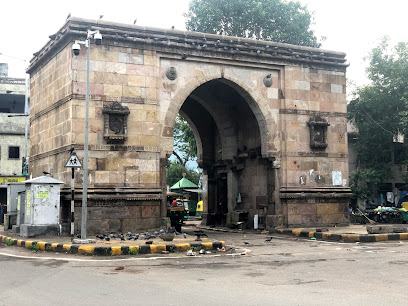
Rani no Hajiro
Explore the historical splendor of Rani no Hajiro, a royal mausoleum in Ahmedabad, showcasing intricate architecture and vibrant local culture.

Jama Masjid
Explore the architectural beauty and historical significance of Jama Masjid, a landmark mosque in Ahmedabad showcasing India's rich cultural heritage.

Sarkhej Roza
Explore Sarkhej Roza, a stunning 15th-century Islamic complex in Ahmedabad, showcasing intricate architecture and serene gardens.

Unmissable attractions to see
Riverfront Flower Park
Explore the vibrant blooms and serene landscapes of Riverfront Flower Park, a picturesque oasis along the Sabarmati River in Ahmedabad, Gujarat.

Mahatma Gandhi Sabarmati Ashram
Experience the essence of India's independence movement at Mahatma Gandhi Sabarmati Ashram, a serene historical site in Ahmedabad.

Adalaj Stepwell
Explore the mesmerizing Adalaj Stepwell, a historical gem in Gujarat showcasing ancient Indian architectural brilliance and serene landscapes.

Parimal Garden
Explore Parimal Garden, Ahmedabad's serene urban oasis, filled with vibrant flora and peaceful pathways for relaxation and recreation.

BAPS Swaminarayan Akshardham, Gandhinagar
Discover the exquisite beauty and spirituality of BAPS Swaminarayan Akshardham in Gandhinagar, a must-visit pilgrimage and cultural destination in Gujarat.
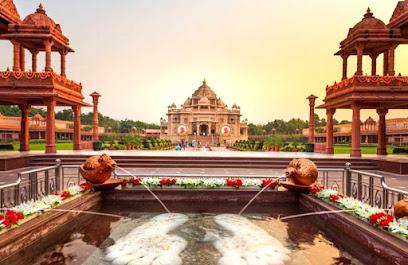
Kamla Nehru Zoo
Experience the vibrant wildlife and lush landscapes at Kamla Nehru Zoo, a top tourist attraction in Ahmedabad, perfect for families and nature lovers.

Riverfront Park
Experience the vibrant serenity of Riverfront Park in Ahmedabad, a perfect blend of nature, art, and recreation along the Sabarmati River.

Kankaria Lake
Discover the charm of Kankaria Lake in Ahmedabad, a perfect blend of natural beauty and recreational fun for your travel itinerary.
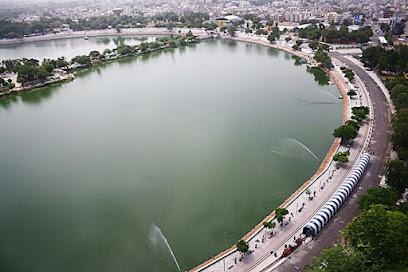
ISKCON Temple, Ahmedabad
Discover inner peace and vibrant culture at the ISKCON Temple in Ahmedabad, a spiritual retreat dedicated to Lord Krishna.

Science City Ahmedabad
Discover the excitement of science at Science City Ahmedabad, a fusion of education and entertainment in Gujarat's premier science attraction.

Sabarmati Riverfront
Experience the beauty and cultural richness of Sabarmati Riverfront, a scenic retreat in the heart of Ahmedabad offering leisure and adventure.

Auto World Vintage Car Museum
Explore the Auto World Vintage Car Museum in Ahmedabad, showcasing a stunning collection of classic cars and the rich history of the automobile.

Hutheesing Jain Temple
Explore the Hutheesing Jain Temple in Ahmedabad, a masterpiece of Jain architecture and a serene sanctuary for spiritual seekers and history enthusiasts.

Atal Bridge
Explore the Atal Bridge, an architectural wonder in Ahmedabad, offering stunning views and a vibrant riverfront experience.

Sidi Saiyyed Mosque
Explore the Sidi Saiyyed Mosque, a stunning example of Indo-Islamic architecture in Ahmedabad, showcasing intricate stone lattice work and rich cultural heritage.

Essential places to dine
Jassi De Parathe
Experience the rich flavors of authentic Punjabi cuisine at Jassi De Parathe in Ahmedabad - a vegetarian paradise!

Yanki Sizzlerr - Executive Lunch Ahmedabad | Sizzler in Ahmedabad | Pack Lunch in Ahmedabad|Navrangpura
Experience the vibrant flavors of vegetarian cuisine at Yanki Sizzlerr – a must-visit dining destination in Ahmedabad's Navrangpura.
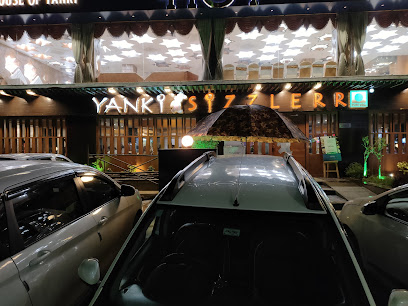
Sazzy Sizzlers (Pure-Veg)
Discover the ultimate pure-veg fine dining experience at Sazzy Sizzlers in Ahmedabad—where every dish is an adventure in flavor.

Rajwadu
Experience the rich flavors of Gujarati and Rajasthani cuisine at Rajwadu, where tradition meets taste in an enchanting setting.
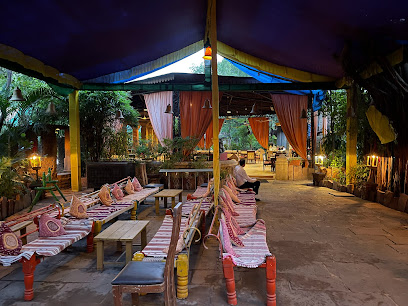
Lucky Restaurant
Experience authentic Indian vegetarian cuisine at Lucky Restaurant in Ahmedabad's historic Lal Darwaja - a culinary delight open from dawn till dusk.

Jungle Bhookh Restaurant
Discover the vibrant flavors of vegetarian cuisine at Jungle Bhookh Restaurant in Ahmedabad – where every meal is an adventure!

Under The Neem Trees
Discover culinary excellence at Under The Neem Trees - where traditional Indian flavors meet modern dining elegance in Ahmedabad.

Patang Re-Evolve
Savor exquisite North Indian cuisine with stunning views at Patang Re-Evolve - Ahmedabad's premier fine dining destination.
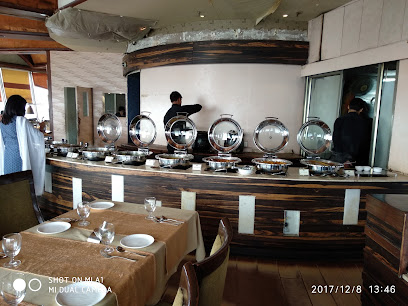
Vishalla restaurant
Discover the heart of Gujarati cuisine at Vishalla restaurant - where tradition meets taste in Ahmedabad's vibrant dining scene.

Nini's Kitchen - Panchvati
Experience the essence of vegetarian cuisine at Nini's Kitchen in Ahmedabad - where North Indian flavors meet fine dining.
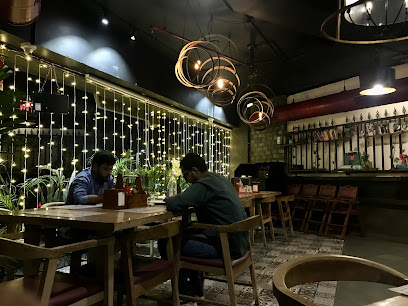
650 - The Global Kitchen
Discover exquisite modern Indian cuisine amidst lush gardens at 650 - The Global Kitchen in Ahmedabad.
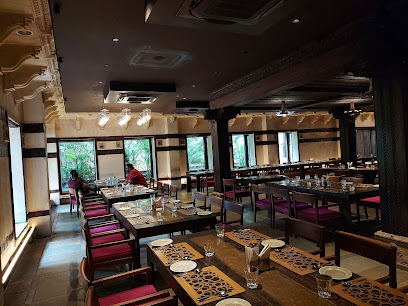
Sasuji Dining Hall
Experience authentic Gujarati flavors at Sasuji Dining Hall in Ahmedabad - a fine dining vegetarian restaurant that celebrates India's rich culinary heritage.
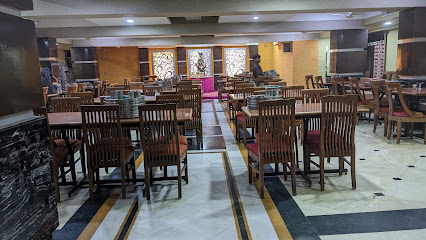
Agashiye
Experience exquisite Gujarati cuisine at Agashiye, where tradition meets elegance in the heart of Ahmedabad.

Brick Kitchen
Experience exquisite vegetarian fine dining at Brick Kitchen in Ahmedabad – where elegance meets flavor.

Kaboose Restaurant
Discover the rich flavors of Punjabi cuisine at Kaboose Restaurant in Ahmedabad – a family-friendly haven for vegetarian delights.

Markets, malls and hidden boutiques
Shree Balaji Agora Mall
Experience the best of shopping, dining, and entertainment at Shree Balaji Agora Mall in Ahmedabad, where every visit offers something new and exciting.

Lifestyle Stores
Explore Lifestyle Stores in Ahmedabad for a unique shopping experience with a variety of gifts, clothing, and beauty supplies that reflect local culture.

Shoppers Stop
Discover a shopping paradise at Shoppers Stop in Ahmedabad, offering diverse clothing and accessories for every style and occasion.
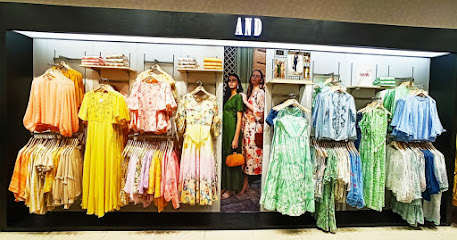
Law Garden Fashion Street
Explore the vibrant Law Garden Fashion Street, a traditional market in Ahmedabad filled with colorful clothing, unique jewelry, and local handicrafts.

Q Land Pan & Gift Shop
Explore the vibrant Q Land Pan & Gift Shop in Ahmedabad, where unique gifts and local treasures await every visitor.

Asopalav Ratanpole
Explore Asopalav Ratanpole in Ahmedabad for a unique blend of traditional and contemporary clothing that showcases the rich textile heritage of Gujarat.

Dhalgarwad Market | best market in Ahmedabad
Explore the vibrant Dhalgarwad Market in Ahmedabad, a bustling hub of fashion and culture where every corner offers unique finds and local charm.

Miniso
Discover an array of stylish gifts and accessories at Miniso, Ahmedabad's favorite one-stop shop for unique souvenirs.

Anand Emporium
Explore Anand Emporium in Ahmedabad for a diverse selection of stylish clothing and accessories that reflect the vibrant culture of Gujarat.

Sanskruti by Sanjay Desai: Experience the beauty of handcrafted Indian ethnic wear and fabrics for women & men in Ahmedabad.
Explore the exquisite craftsmanship of Indian ethnic wear at Sanskruti by Sanjay Desai, where tradition meets style in Ahmedabad's vibrant fabric store.

Kapasi Handicrafts Emporium
Explore Kapasi Handicrafts Emporium in Ahmedabad for unique gifts, exquisite handicrafts, and a glimpse into the artistry of Indian culture.
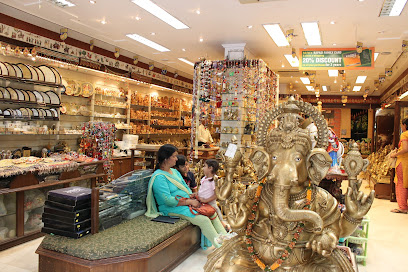
9 To 9 Dollar Shop
Explore Ahmedabad's vibrant 9 To 9 Dollar Shop for unique gifts and souvenirs, capturing the spirit of your travels with every purchase.

Anupam Matching Palace
Discover unique women's clothing at Anupam Matching Palace, Ahmedabad's premier boutique for stylish and quality fashion.

Fabindia, CG Road
Explore Fabindia in Ahmedabad for exquisite Indian handicrafts, sustainable fashion, and authentic organic products that celebrate India's rich culture.

Gift 'O' Infinity
Discover unique gifts, handcrafted treasures, and delightful aromas at Gift 'O' Infinity in Ahmedabad, a perfect shopping destination for every occasion.

Essential bars & hidden hideouts
Mocha Bodakdev
Experience the unique blend of bar, coffee shop, and gastropub at Mocha Bodakdev, a culinary hotspot in Ahmedabad offering diverse flavors and a vibrant atmosphere.

Makeba The Lounge Cafe
Experience a culinary delight at Makeba The Lounge Cafe in Ahmedabad, where exquisite flavors meet stunning views and vibrant ambiance.
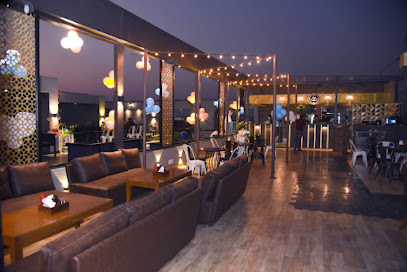
Sphere Lounge
Experience the vibrant atmosphere and exquisite cuisine at Sphere Lounge, Ahmedabad's premier culinary retreat for unforgettable evenings.

Lil' Heaven - The Party House
Experience the vibrant nightlife of Ahmedabad at Lil' Heaven, where delicious food and electrifying music create unforgettable moments.

Spirit O Sound
Immerse yourself in the vibrant nightlife at Spirit O Sound, Ahmedabad's premier disco club offering exceptional dining and electrifying dance experiences.

Adani Magnum King Non Alcoholic Beer Shop
Explore the unique flavors of non-alcoholic beers at Adani Magnum King Non Alcoholic Beer Shop, a must-visit bar in Ahmedabad.

Amnesia Lounge
Discover the perfect blend of vegetarian cuisine and vibrant atmosphere at Amnesia Lounge in Ahmedabad, a must-visit destination for food lovers.

Business Class Lounge
Experience luxury and relaxation at the Business Class Lounge in Ahmedabad's Radisson Blu Hotel, where exquisite dining meets refined hospitality.

Juniper Lounge
Discover elegance and comfort at Juniper Lounge in Ahmedabad, where local flavors meet a serene atmosphere for a truly unforgettable experience.

Fire Pan
Experience the lively ambiance of Fire Pan, a must-visit bar in Ahmedabad offering a delightful mix of local and international beverages.

Deepak Beer Bar
Discover the vibrant nightlife at Deepak Beer Bar in Ahmedabad - a perfect blend of refreshing drinks and lively ambiance.

10 The Rest & Bars
Discover the vibrant nightlife of Ahmedabad at 10 The Rest & Bars, where exquisite drinks and delightful cuisine come together in a lively atmosphere.

Chetan
Discover the vibrant bar scene at Chetan in Ellisbridge, Ahmedabad, where local flavors and a cozy atmosphere await.

Barcode Point
Discover Barcode Point in Naranpura, Ahmedabad - a trendy bar offering a lively atmosphere and diverse drink selection for an unforgettable night.

KRUNAL DADA KA ADDA
Discover the lively spirit of Ahmedabad at Krunal Dada Ka Adda, a vibrant bar perfect for unwinding and connecting with locals.

Local Phrases
-
- Helloહેલો
[hello] - Goodbyeઅલવિદા
[alvida] - Yesહા
[ha] - Noનહીં
[nahin] - Please/You're welcomeકૃપા કરીને
[krupa karine] - Thank youઆભાર
[abhar] - Excuse me/Sorryબક્ષણ કરો
[bakshan karo] - How are you?તમે કેમ છો?
[tame kem cho?] - Fine. And you?સારુ. અને તુ?
[saru. ane tu?] - Do you speak English?તમે અંગ્રેજી બોલો છો?
[tame angreji bolo cho?] - I don't understandહું સમજુ નથી
[hun samju nathi]
- Helloહેલો
-
- I'd like to see the menu, pleaseકૃપા કરીને મેનૂ જોવા માંગુ છું
[krupa karine menu jovaa mangoo chhu] - I don't eat meatહું માંસ નથી ખાતો
[hun maans nathi khaato] - Cheers!ચિયર્સ!
[cheers!] - I would like to pay, pleaseકૃપા કરીને ભુગતાન કરવું છું
[krupa karine bhugatan karvum chhu]
- I'd like to see the menu, pleaseકૃપા કરીને મેનૂ જોવા માંગુ છું
-
- Help!મદદ!
[madad!] - Go away!ચલો ચલો!
[chalo chalo!] - Call the Police!પોલીસ બુલાવો!
[police bulaavo!] - Call a doctor!ડોક્ટર બુલાવો!
[doctor bulaavo!] - I'm lostહું હરી ગયો છું
[hun hari gayo chhu] - I'm illહું બીમાર છું
[hun bimaar chhu]
- Help!મદદ!
-
- I'd like to buy...હું ... ખરીદવા માંગુ છું
[hun ... kharidva mangoo chhu] - I'm just lookingહું ફક્ત જોવું છું
[hun fakt jovu chhu] - How much is it?એનુ ભાવ કેટલું છે?
[enu bhaav ketlum che?] - That's too expensiveતે ખૂબ મહંગુ છે
[te khub mahangu che] - Can you lower the price?તમે ભાવ ઓછું કરી શકો છો?
[tame bhaav ochhum kari shako cho?]
- I'd like to buy...હું ... ખરીદવા માંગુ છું
-
- What time is it?હવે કેટલી વાગ્યું છે?
[have ketli vaagyum che?] - It's one o'clockએક વાગ્યું છે
[ek vaagyum che] - Half past (10)દસ નું અડધું
[das num adhdu] - Morningસવાર
[savar] - Afternoonબપોર
[bapor] - Eveningસાંજ
[saanj] - Yesterdayગઈકાલ
[gaikal] - Todayઆજ
[aaj] - Tomorrowકાલ
[kaal] - 1એક
[ek] - 2બે
[be] - 3ત્રીજું
[trijum] - 4ચાર
[char] - 5પાંચ
[paanch] - 6છ
[chh] - 7સાત
[saat] - 8આઠ
[aath] - 9નવ
[nav] - 10દસ
[das]
- What time is it?હવે કેટલી વાગ્યું છે?
-
- Where's a/the...?એ... ક્યાં છે?
[e... kyaam che?] - What's the address?સરનામું શું છે?
[sarnaamum shu che?] - Can you show me (on the map)?તમે મને દર્શાવી શકો છો?
[tame mane darshaavi shako cho?] - When's the next (bus)?આવતીકાલ ક્યારે છે?
[aavatikaal kyaare che?] - A ticket (to ....)ટિકિટ (... માટે)
[ticket (... maate)]
- Where's a/the...?એ... ક્યાં છે?
History of Ahmedabad
-
Ahmedabad was founded in 1411 AD by Sultan Ahmed Shah of the Muzaffarid dynasty. Legend has it that he decided to establish the city after seeing a hare chasing a dog, which he interpreted as a sign of the land's exceptional bravery and strength.
-
Built in 1414, Ahmed Shah's Mosque is one of the oldest mosques in the city. It served not only as a place of worship but also as a symbol of the Sultan's power and religious devotion. The intricate carvings and Indo-Islamic architectural style make it a significant landmark.
-
Ahmedabad flourished as the capital of the Gujarat Sultanate from the early 15th century until its conquest by the Mughals in 1573. During this period, the city became a hub for trade, culture, and architectural innovation.
-
Completed in 1424, the Jama Masjid in Ahmedabad is one of the largest and most splendid mosques in India. Built by Sultan Ahmed Shah, the mosque combines Hindu and Islamic architectural elements, showcasing the city's cultural syncretism.
-
In 1573, the Mughal Emperor Akbar conquered Ahmedabad and incorporated it into his empire. This period saw the construction of several important buildings, including the Sidi Saiyyed Mosque, famous for its intricate latticework windows.
-
Ahmedabad came under British control in 1818 after the Third Anglo-Maratha War. The British influence brought modernization to the city, including the establishment of textile mills, leading to its nickname 'Manchester of the East.'
-
In 1917, Mahatma Gandhi established the Sabarmati Ashram in Ahmedabad, which became a focal point for the Indian independence movement. It was from here that Gandhi launched the famous Dandi March in 1930.
-
After India gained independence in 1947, Ahmedabad emerged as a major industrial center. The city expanded rapidly, becoming a key player in India's textile industry and attracting entrepreneurs from across the country.
-
On January 26, 2001, a devastating earthquake struck Gujarat, causing significant damage in Ahmedabad. The disaster led to extensive rebuilding efforts and the modernization of the city's infrastructure.
-
In 2017, Ahmedabad was declared India's first UNESCO World Heritage City. This recognition was given for its rich architectural heritage, including centuries-old mosques, temples, and historic city gates.
Ahmedabad Essentials
-
Ahmedabad is well-connected by air, rail, and road. The Sardar Vallabhbhai Patel International Airport serves both domestic and international flights and is located about 15 kilometers from the city center. Major airlines operate frequent flights to and from cities like Mumbai, Delhi, and Bangalore, as well as international destinations. Ahmedabad Junction is a major railway station with trains connecting to various parts of India. For road travel, national highways link Ahmedabad to major cities, and intercity buses are available from nearby states.
-
Within Ahmedabad, transportation options include auto-rickshaws, taxis, app-based ride services like Uber and Ola, and public buses operated by the Ahmedabad Municipal Transport Service (AMTS). The Bus Rapid Transit System (BRTS) is a reliable and efficient option for getting around the city. For a more local experience, you can also rent a bicycle or a scooter. Rental cars are available but driving in the city can be hectic due to traffic.
-
The official currency is the Indian Rupee (INR). Credit and debit cards are widely accepted in hotels, restaurants, and shops. However, it's advisable to carry cash for smaller establishments and street vendors. ATMs are plentiful in the city, and currency exchange services are available at the airport and in major hotels.
-
Ahmedabad is generally safe for tourists. However, like any major city, it's essential to stay vigilant. Areas like the Old City can get crowded, so watch your belongings. Avoid isolated areas late at night. While violent crime is rare, petty thefts like pickpocketing can occur in busy markets and tourist spots. Always use licensed taxis or rideshare services.
-
In case of an emergency, dial 100 for police assistance, 101 for fire emergencies, and 102 for medical emergencies. Major hospitals like the Civil Hospital and Sterling Hospital provide 24/7 emergency services. Pharmacies are widespread and typically open late. It's advisable to have travel insurance that covers medical emergencies.
-
Fashion: Do dress modestly, especially when visiting religious sites. Avoid revealing clothing. Religion: Do respect local customs; remove footwear before entering temples and mosques. Public Transport: Do be patient and respectful. Avoid eating or drinking on public transport. Greetings: Do greet people with a 'Namaste' or a handshake. Eating & Drinking: Do try local Gujarati cuisine. Don't use your left hand for eating or passing food, as it is considered unclean.
-
To experience Ahmedabad like a local, visit the Manek Chowk for its street food and bustling night market. Explore the Pols (traditional residential clusters) in the Old City for a glimpse of local architecture and community life. Take a leisurely stroll along the Sabarmati Riverfront. For shopping, head to Law Garden Night Market for traditional handicrafts and souvenirs.
Nearby Cities to Ahmedabad
-
Things To Do in Vadodara
-
Things To Do in Rajkot
-
Things To Do in Udaipur
-
Things To Do in Nashik
-
Things To Do in Jodhpur
-
Things To Do in Pushkar
-
Things To Do in Mumbai
-
Things To Do in Aurangabad
-
Things To Do in Jaisalmer
-
Things To Do in Bhopal
-
Things To Do in Hyderabad
-
Things To Do in Pune
-
Things To Do in Ranthambore
-
Things To Do in Jaipur
-
Things To Do in Karachi













